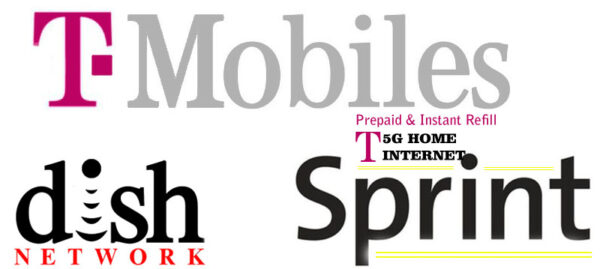Instant Mobile Recharge
- Easy & secure payments
- Online available 24/7
What Is Broadband?
Broadband refers to various high-capacity transmission technologies that transmit data, voice, and video across long distances and at high speeds. Common mediums of transmission include coaxial cables, fiber optic cables, and radio waves.
Broadband is always connected and removes the need for dial-up. Its importance is far-reaching; it allows for high-quality and quick access to information, teleconferencing, data transmission, and more in various capacities, including healthcare, education, and technological development
KEY TAKEAWAYS
- The term broadband refers to high-speed and high-bandwidth communication infrastructure.
- It commonly relates to high-speed Internet services, which have become increasingly important to both consumers and governments.
- New innovations in satellite-based broadband services could potentially broaden the scope of access throughout the world.
- There are six main types of broadband technologies: digital subscriber line (DSL), cable modem, fiber, wireless, satellite, and broadband over power lines (BPL).
- The bulk of Internet users (92.6%) across the globe access broadband through their mobile phones.
Understanding Broadband
Today, the discussion of broadband often centers on high-speed Internet access. Historically, broadband Internet was defined as being faster than a traditional dial-up Internet connection. However, it is now common for more precise definitions to be required.
For instance, the Federal Communications Commission (FCC) ruled in 2015 that, to be considered broadband Internet, the service must offer download and upload speeds of at least 25 and 3 megabits per second, respectively.
In general, however, the two defining characteristics of broadband are that it is high-speed and that it is available at all times. Both of these characteristics serve to distinguish broadband from older dial-up connections. Not only was dial-up Internet connection slower, but it was only available when specifically requested by the user.
Global usage and speeds
Because of its clear advantages over dial-up services, broadband Internet access is preferred by both end users and governments.The use of broadband has been increasing. According to data from the International Telecommunication Union (ITU), the United Nations specialized agency for information and communication technologies (ICTs), the estimated number of people using the Internet hit 4.9 billion in 2021, up from an estimated 4.1 billion in 2019.
Broadband speeds are also improving. By 2023, the global average broadband speed is expected to be 110.4 Mbps, more than double the average speed of 45.9 Mbps registered in 2018. Mobile speeds, meanwhile, are predicted to average 43.9 Mbps in 2023, up from 13.2 Mbps in 2018.
U.S. broadband investment
A decent Internet connection and a healthy economy go hand in hand. Nowadays, consumers and businesses rely on broadband to buy and sell things, communicate, obtain information, operate technology, and so forth. This means fast, affordable access is paramount, and having no broadband connection is considered comparable to living in the Dark Ages.
The U.S., like many other economies, has allocated a great deal of money to improve its Internet capabilities. In November 2021, President Joe Biden signed into law the historic $1.2 trillion Infrastructure Investment and Jobs Act. Aside from earmarking funds for transportation, roads, power grids, supplies of safe water, and so forth, the ambitious bipartisan legislation also set aside $65 billion to boost Internet access in rural areas and among low-income families.
The plan is to “help ensure every American has access to reliable high-speed Internet” at an
affordable price by investing in technology, boosting competition, and making it easier to shop for better deals.
“Broadband Internet is necessary for Americans to do their jobs, to participate equally in school learning, healthcare, and to stay connected. Yet, by one definition, more than 30 million Americans live in areas where there is no broadband infrastructure that provides minimally acceptable speeds —a particular problem in rural communities throughout the country,” the White House said in a press release announcing its infrastructure pledge.
As of November 2021, an estimated 37% of all individuals worldwide have never used the Internet due to a lack of access. This percentage translates into 2.9 billion people.
Types of Broadband
The six main types of broadband technologies are digital subscriber line (DSL), cable modem, fiber, wireless, satellite, and broadband over powerlines (BPL).
Digital subscriber line (DSL)
DSL transmits data over copper wires that already exist in homes and businesses from telephone lines. The speed of DSL broadband ranges from several hundred Kbps to millions of bits per second (Mbps).5
There are two primary types of DSL technologies: asymmetrical digital subscriber line (ADSL) and symmetrical digital subscriber line (SDSL). ADSL is asymmetrical because its users receive a lot of data but do not send a lot of data. Home residences—where individuals use the Internet primarily for surfing, watching movies, and playing video games—fall under ADSL. Because of the user profile, ADSL has faster speeds for the incoming stream than for the outgoing stream.
On the other hand, SDSL is primarily used by businesses that require fast speeds for both sending and receiving data. Business Internet needs exceed the typical Internet needs of home residences and require sending large amounts of data, such as for videoconferencing.
Cable modem
Cable modems allow for data transmission on the same coaxial cables used by cable companies to send pictures and sound to your television. Cable modems are external devices that provide speeds of 1.5 Mbps or more. Speeds vary depending on the option selected from your cable provider, the cable modem, and traffic.
On Nov. 15, 2021, President Joe Biden signed the $1.2 trillion Infrastructure Investment and Jobs Act, which includes $550 billion in new funding to rebuild roads and bridges, water infrastructure, resilience, and Internet, among other areas of infrastructure. The new law allocates $65 billion in funds to expand broadband in rural areas and in low-income communities, which often lack dependable access to the Internet.
Fiber
Fiber broadband uses fiber optic technology that converts electrical signals to light. The electrical signals carry data. When converted to light, the light is sent through transparent glass fibers. The speed at which fiber transmits data is significantly greater than that of DSL and cable modems, usually by tens or hundreds of Mbps.
Fiber connections can also deliver voice and video and act as an alternative to traditional cable connections. Currently, access to fiber is limited as it requires companies to build out fiber networks, which have been growing over the past several years.
Wireless
Wireless broadband is either mobile or fixed and transmits data via radio signals from the service provider’s facility to the customer’s location. Wireless helps provide long-range transmissions to areas that are remote and do not have access to DSL, cable, or fiber. The speed of wireless is similar to the speeds of DSL and cable.5
Satellite
Satellite broadband is a form of wireless broadband but uses satellites in the Earth’s orbit to transmit data. Satellite broadband is critical for providing broadband connectivity to remote areas in the world and is a focus of many technology companies that have the goal of providing Internet to the entire globe. Satellite broadband speeds vary depending on many factors but are generally 500 Kbps for downloads and 80 Kbps for uploads.5
Broadband over powerlines (BPL)
BPL transmits data over existing powerlines, can be set up via a building’s existing electrical system, and offers speeds similar to DSL and cable. BPL is a relatively new technology and is only available in select areas. However, there is a lot of buzz surrounding it mainly because its use of powerlines, which are installed everywhere, reduces the need to build new costly infrastructure to serve each broadband customer.5
Special Considerations
Broadband has been around a while now, having been introduced to the world in the early 2000s. However, this space is constantly evolving, with new technologies being developed to boost access, lower costs, and increase connection speeds.
One emerging frontier of broadband transmission technology involves using advanced satellite networks to provide Internet access without the need for large-scale investments in terrestrial infrastructure.
A notable example of this emerging approach is the Starlink Project currently pursued by the private space exploration and development company SpaceX, which is run by Elon Musk. The FCC has given SpaceX permission to launch 12,000 satellites designed to work in tandem to provide high-speed satellite Internet access to users worldwide. SpaceX has also filed paperwork with an international regulator to launch up to 30,000 more satellites.
As of November 2021, Starlink has launched over 1,800 satellites.7 If successful, the stated aim of the project is to provide low-cost broadband Internet services to users throughout the world, potentially undercutting ground-based telecommunications providers in the process.
What Is a Broadband Connection?
Broadband is the transmission of high-quality data of wide bandwidth. In its simplest form, it is a high-speed Internet connection that is always on. Broadband connections include Wi-Fi, DSLs, fiber, and satellites.
What Is a Broadband Modem?
A broadband modem is an external device that connects to high-speed Internet, such as over a DSL or cable network. The connection is always on and does not require the user to connect before using the Internet.
What Is Considered a Good Broadband Speed?
For standard broadband, a good speed is 11 Mbps. Faster speeds would be between 11 Mbps and 50 Mbps, and very fast speeds would be 100 Mbps or higher.
What Is the Difference Between Broadband and Wi-Fi?
Wi-Fi is a type of broadband connection. Broadband is access to the network that provides the Internet, and Wi-Fi is one of the means of access. Wi-Fi uses wireless connectivity, primarily radio signals, to connect.
What Is the Difference Between Broadband and DSL?
DSL is also a type of broadband connection, such as Wi-Fi. Broadband is the method of receiving and sending data. DSL is one of the technologies that allow for this. It uses copper cables in the house to connect to the Internet.
The Bottom Line
Broadband is a high-quality transmission technology that allows for the transfer of voice, video, and data. It is primarily used in the capacity of the Internet, with individuals and businesses accessing broadband connectivity via fixed or mobile connections.
Many companies are attempting to provide broadband services to the globe because fast access to high-quality data is seen as a benefit to humankind.





